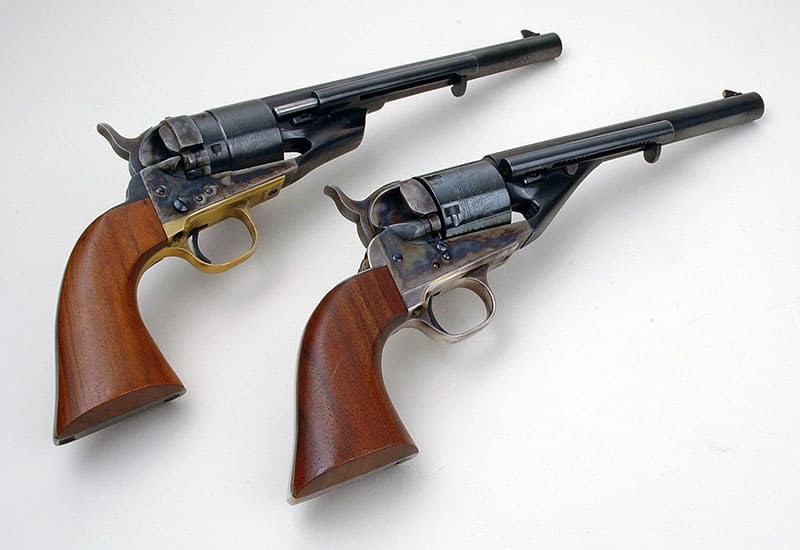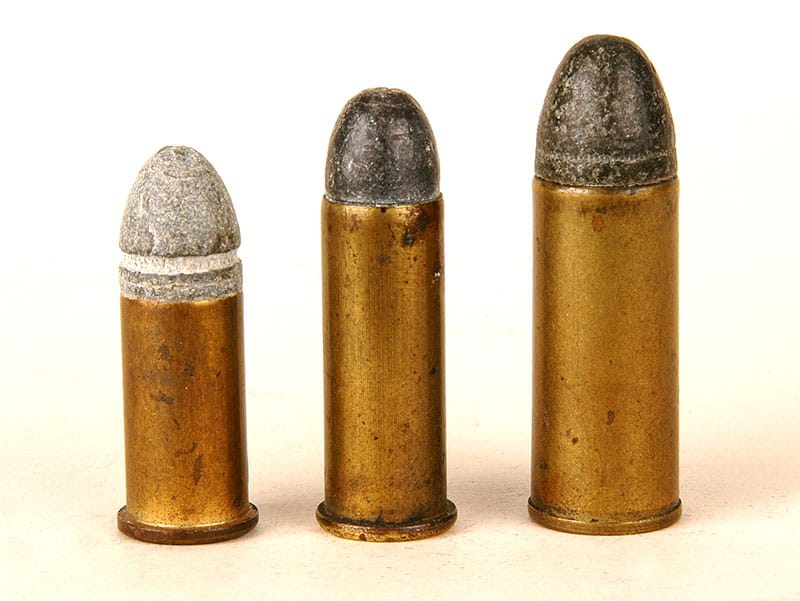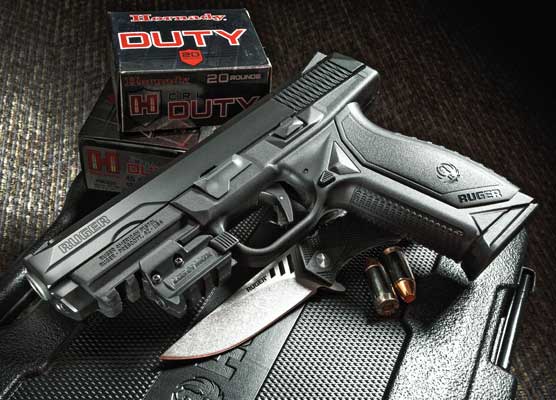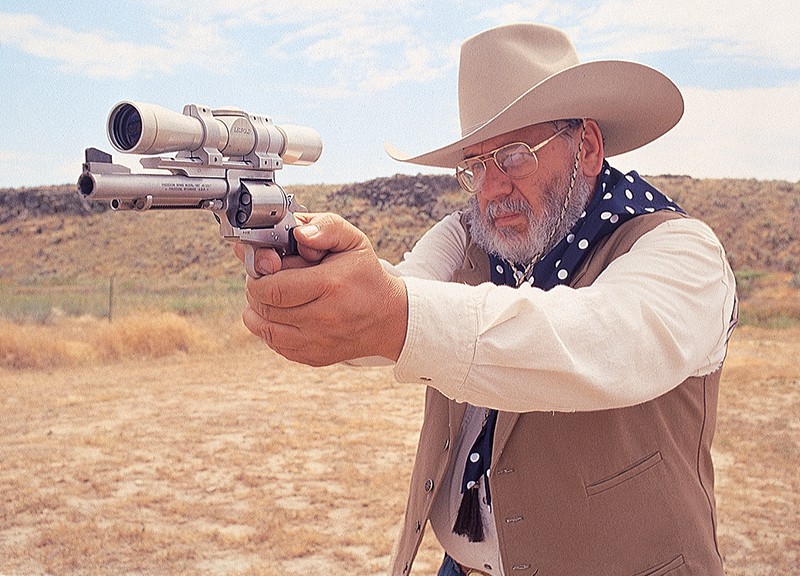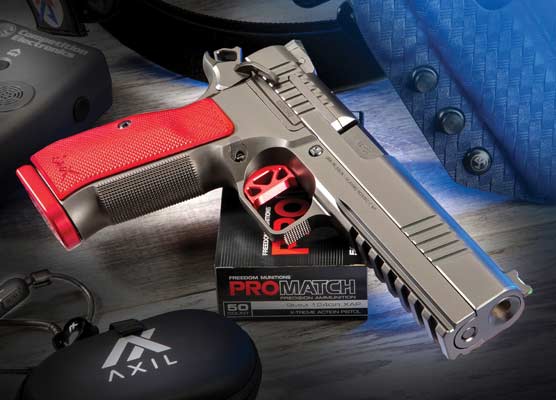Colt's Cartridge Conversions
Part 7 Of 12 Part Genesis Of The Colt Single Action
With this installment we reach a fascinating type of Colt single action revolver — the Cartridge Conversions. That’s a misnomer because it implies this genre of revolver was actually converted: that is revolvers that were already built as cap and ball types were converted to fire metallic cartridges. Colt Conversions were not built that way. They were assembled from a mix of parts left over from cap and ball revolver production and newly manufactured ones. What Cartridge Conversions represented was a change of concept from revolvers accepting loose powder and ball (or paper cartridges) rammed in from the front of the cylinder to ones taking fully contained metallic cartridges loading from the rear of the cylinder.
In truth it was a brilliant business move because it allowed the Colt Patent Firearms Company to “convert” literally tons of obsolete parts for revolvers no longer in production, into cash. In brief here’s how the story played out. Until 1869 Smith & Wesson controlled the patent on revolver chambers bored completely through. Therefore Colt had to stand fast with their cap and ball revolvers or have nothing to sell at all. They could not join the metallic cartridge age until that patent expired.
It did, and by 1871 Colt began selling the so-called conversions. In fact their large frame .44 caliber one served as an official U.S. Army handgun for about two years. The basis for these .44 conversions was the Model 1860 Army .44. The method used what was called the Richards Conversion, after the Colt engineer who developed it. Colt’s Richards conversions’ most significant parts were all leftovers from Model 1860s with one important exception; the cylinders were newly manufactured. A breech plate was fitted at the rear of the cylinder, atop which was machined a rear sight. For those who might think Ruger’s frame-mounted firing pin was a 20th century brainstorm, think again. Mr. Richards used it on his conversions in 1871.
Because conversions needed no rammer beneath the barrel but did need an ejector rod on it to punch out fired cartridge cases, Richards Conversions’ ejector rod housings were made to fill the barrel’s rammer recess. For some reason the last one inch or so of the ejector rod was left exposed. About 9,000 Colt Richards Conversions were made, but then the supply of Model 1860 barrels dried up. Thereafter another 2,100 metallic firing .44s were built on a conversion called the Richards/Mason type. Mr. Mason was another Colt engineer. Because these second type of Colt Conversions used newly made barrels they had no rammer recess needing filling. With them, the ejector rod housing simply bolts to the barrel itself. Also with Richards/Mason conversions, the rear sight was moved from the back of the cylinder to the rear of the barrel and the firing pin was attached to the hammer.
Calibers
Evidently .36 caliber Colt Models 1851 and 1861 had been the best sellers in cap and ball days because there were fewer of their parts left over to “convert” into metallic cartridge six-guns. Only about 3,800 of the former and a mere 2,200 of the later were made to fire cartridges. As far as I can ascertain all of the Model 1851s and 1861s were converted by the Richards/Mason system. Interestingly where the big .44s were only chambered for the .44 Colt centerfire round, the .36s were chambered for both centerfire and rimfire .38 caliber cartridges.
Surprisingly, the Colt Conversions made in the greatest numbers were those built on the 5-shot frames of the .36 caliber Model 1862s. According to Flayderman’s Guide To Antique American Firearms, Colt produced about 25,000 of these between 1873 and 1880. They too became .38 caliber cartridge handguns: some rimfire and some centerfire.
The cartridges developed for these conversions are likewise interesting. What was done to make them was simple. The bullets were built like those used in cap and ball revolvers, the elongated projectiles and not round balls. These had a reduced diameter shank at the base that fit into the cap and ball cylinders. Then the wider portion was swaged as the projectile was forced into a cap and ball chamber by the rammer. Cartridge designers of the 1870s built cases that fit onto that reduced diameter shank and made the widest part of the bullet the same diameter as the outside of the cartridge case. These are called “heel-base bullets.” Now, if that all sounds a bit confusing just look at any modern .22 Long Rifle cartridge. They are still made in that manner.
The reason this had to be done was to fit the bullets to cap and ball barrels. Remember from earlier installments that a Colt .36 caliber cap and ball revolver had nominal barrel groove diameter of .375″. The .44s had .451″ as that diameter. Therefore cartridge designers had to come up with ammunition with projectiles large enough to fit those barrels. As was quickly determined, such was not the optimum way to make metallic handgun ammunition and the method quickly became obsolete. Except for .22 rimfires, no handgun cartridge developed after about 1880 used heel-base bullets.
Shooting And Such
Over the years I’ve owned an original Colt Richard Conversion .44 and had replicas built on modern cap and ball revolvers to duplicate both Richards/Mason .44s and .38s. From shooting them with black powder loads copying original ammo as closely as possible I say that Colt Conversion six-guns were not sissies. The .44 Colt with 210 grain bullet gave 787 fps from an 8″ barrel. My Model 1861 .38 Colt Conversion will push a 150 grain bullet to 750 fps.
I think the Colt cartridge conversions were popular sellers in the 1870s. Furthermore I believe most of them, especially the larger holster-types, “went west.” That’s because so many I have viewed at large antique gun shows have shown considerable wear. The muzzles of many .44s have almost been worn through at the side from being carried so much in leather holsters.
Colt’s cartridge conversions didn’t actually serve as a bridge between the cap and ball era and the coming of metallic handgun ammunition. They were more a smart business move.
Click Here To View List And Links To All Colt Series Articles




